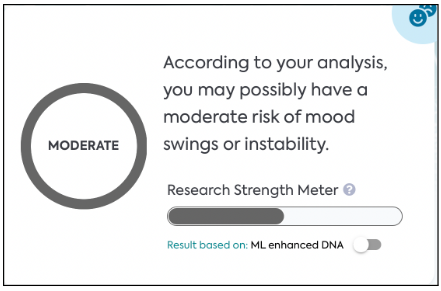Your Tendency to Skip Breakfast: Genetic Predisposition or Lifestyle Choice?
Aira
on
May 2, 2024
Overview
Breakfast, often hailed as the most important meal of the day, has garnered significant attention in nutritional discourse. Yet, amidst the fervor for healthy eating habits, a notable phenomenon persists: breakfast skipping. Picture this — a rushed morning, a glance at the clock, and the decision to skip breakfast. But is this habit merely a consequence of lifestyle factors, or could there be a genetic reason for this behavior?
Why is Breakfast Considered the Most Important Meal of the Day?
Breakfast has earned its reputation as the most important meal of the day for several compelling reasons. After a night’s sleep, our bodies need to refuel and replenish essential nutrients to kickstart the day. Eating breakfast provides the necessary energy to fuel both physical and mental activities, enhancing productivity and concentration throughout the morning.
Breakfast consumption has also been linked to improved cognitive function and academic performance, especially in children and adolescents. Nutrient-rich breakfast options provide essential vitamins and minerals crucial for brain development and function, enhancing memory, attention, and problem-solving skills.

Is Skipping Breakfast Harmful?
Skipping breakfast can have negative implications for both short-term and long-term health. In the short term, skipping breakfast can lead to decreased energy levels, reduced concentration, and increased feelings of hunger later in the day. This can result in overeating during subsequent meals, potentially leading to weight Increase over time.
Moreover, breakfast skipping has been linked to various metabolic disturbances, including impaired glucose metabolism and insulin sensitivity. Consistently skipping breakfast may increase the risk of developing type 2 diabetes, especially among individuals with genetic predispositions to the condition.
Furthermore, breakfast omission has been associated with an increased risk of cardiovascular disease. Studies have shown that individuals who regularly skip breakfast are more likely to have elevated blood pressure, cholesterol levels, and markers of inflammation, all of which are risk factors for heart disease.
For individuals with certain genetic variations related to appetite regulation and metabolism, skipping breakfast may exacerbate these risks. It is essential to consider both genetic predispositions and lifestyle factors when evaluating the potential harm of breakfast skipping. Overall, incorporating a balanced breakfast into your daily routine can contribute to better health outcomes in the long run.
Is Skipping Breakfast Genetic?
A recent 2019 study has shed light on the genetic factors influencing this morning habit. Researchers delved into the UK Biobank data, involving a whopping 193,860 participants, to uncover genetic variants associated with skipping breakfast.
What did they find? Six independent genetic variants stood out, each revealing intriguing insights. Among them were variants associated with genes connected to caffeine metabolism (ARID3B/rs35107470) ), carbohydrate processing (FGF21/rs637174), and even mental health conditions like schizophrenia (ZNF804A/rs12693399). Surprisingly, some of the six associated genes were linked to the circadian rhythm—the body’s internal clock—suggesting a biological basis for breakfast behaviors.
The study also unveiled associations between breakfast skipping and various health outcomes. Individuals genetically predisposed to skipping breakfast tended to have higher body mass index, more depressive symptoms and were more likely to smoke. On the flip side, those who identified as “evening people” were more prone to skipping breakfast, hinting at a bidirectional relationship between sleep patterns and morning eating habits.
These findings underscore the importance of breakfast in a healthy lifestyle. While genetics may play a role in our breakfast preferences, understanding these genetic influences can empower individuals to make informed choices about their eating habits.
What Other Factors Can Affect Skipping Breakfast?
Environmental factors play a significant role in shaping an individual’s tendency to skip breakfast. While genetics may predispose someone to certain behaviors, environmental influences can either exacerbate or mitigate these tendencies. Here are several key environmental factors that can affect a person’s likelihood of skipping breakfast:
- Time Constraints: Busy schedules and hectic mornings are common reasons for skipping breakfast. When individuals are pressed for time, they may prioritize other tasks over-preparing or consuming breakfast. Factors such as early work or school start times, long commutes, or caregiver responsibilities can all contribute to time constraints in the morning.
- Accessibility and Availability of Food: The availability of breakfast foods in the home or workplace can influence whether someone chooses to eat breakfast. Limited access to nutritious breakfast options or a lack of time to prepare food can lead individuals to skip breakfast altogether. On the other hand, easy access to grab-and-go breakfast items or pre-prepared meals may encourage breakfast consumption.
- Socioeconomic Status: Socioeconomic factors, such as income level and education, can impact breakfast habits. Research suggests that individuals from lower socioeconomic backgrounds are more likely to skip breakfast due to financial constraints or limited access to resources. Additionally, individuals with higher levels of education may be more aware of the health benefits of breakfast and prioritize its consumption.
- Cultural and Social Norms: Cultural traditions and social influences can shape attitudes toward breakfast. In some cultures, breakfast is considered a substantial and essential meal, while in others, it may be less emphasized or skipped altogether. Social factors, such as peer influence or workplace norms, can also impact breakfast behavior. For example, individuals may skip breakfast to align with colleagues or friends who do the same.
- Meal Planning and Preparation Skills: Effective meal planning and preparation skills can contribute to consistent breakfast consumption. Individuals who plan their meals ahead of time and have the necessary culinary skills are more likely to prioritize breakfast. Conversely, those who lack meal-planning skills or find cooking challenging may opt to skip breakfast.
- Dietary Habits and Preferences: Personal preferences and dietary habits play a crucial role in breakfast choices. Some individuals may simply not enjoy breakfast foods or prefer to eat later in the day. Additionally, dietary restrictions or preferences, such as vegetarianism or food intolerances, can influence breakfast choices and may lead to skipping breakfast if suitable options are not available.
- Psychological Factors: Psychological factors, such as stress, anxiety, or depression, can impact appetite and eating behaviors, including breakfast consumption. Individuals experiencing high levels of stress may be more likely to skip breakfast or engage in emotional eating patterns.
Understanding these environmental factors can help individuals identify potential barriers to breakfast consumption and make informed choices to promote healthier eating habits. By addressing these influences, individuals can create environments that support consistent breakfast consumption and overall well-being.
What are the Best Breakfast Options?
When it comes to choosing the best breakfast options, prioritizing nutrient-rich foods that provide sustained energy and essential vitamins and minerals is key. Here are some scientifically-backed breakfast options to consider:
- Whole Grain Cereal or Oatmeal: Opt for whole grain cereals or oatmeal, which are high in fiber and complex carbohydrates. Fiber helps promote satiety and aids in digestion, while complex carbohydrates provide a steady release of energy throughout the morning. Look for options with minimal added sugars and top with fresh fruit or nuts for added nutrients.
- Eggs: Eggs are a versatile and nutrient-dense breakfast choice, providing high-quality protein, vitamins, and minerals. Research suggests that consuming eggs for breakfast can promote feelings of fullness and aid in weight management. Try scrambled eggs, omelets, or hard-boiled eggs paired with whole-grain toast and vegetables for a balanced meal.
- Greek Yogurt: Greek yogurt is rich in protein, calcium, and probiotics, making it an excellent choice for breakfast. Protein helps keep you full and satisfied, while calcium supports bone health. Opt for plain Greek yogurt and add your own toppings, such as berries, nuts, or honey, to control added sugars.
- Smoothies: Smoothies are a convenient and customizable breakfast option, allowing you to pack a variety of nutrients in one portable drink. Start with a base of leafy greens, such as spinach or kale, then add fruits, protein sources like Greek yogurt or protein powder, and healthy fats like nut butter or avocado. Blend until smooth for a quick and nutritious breakfast on the go.
- Whole Grain Toast with Nut Butter: Whole-grain toast topped with nut butter, such as almond or peanut butter, is a satisfying and nutrient-rich breakfast option. Nut-based butter provides healthy fats, protein, and fiber, while whole-grain toast offers complex carbohydrates for sustained energy. Sprinkle with chia seeds or sliced banana for extra nutrients and flavor.
- Fruit and Nut Bars: When pressed for time, fruit and nut bars can serve as a convenient breakfast option. Look for bars with minimal added sugars and ingredients you can pronounce. Aim for options made with whole grains, nuts, seeds, and dried fruit for a balanced combination of carbohydrates, protein, and fats.
By incorporating these nutrient-rich breakfast options into your morning routine, you can fuel your body with the essential nutrients it needs to thrive throughout the day. Experiment with different combinations to find what works best for you and your unique genetic makeup.
Is Skipping Dinner Better Than Skipping Breakfast?
While both skipping dinner and skipping breakfast can have potential implications for health, scientific evidence suggests that skipping breakfast may have more detrimental effects than skipping dinner.
Breakfast consumption has been linked to improved cognitive function, academic performance, and mood regulation, particularly in children and adolescents. Skipping breakfast may lead to decreased energy levels, reduced concentration, and increased feelings of hunger later in the day, potentially resulting in overeating and poor food choices.
On the other hand, skipping dinner may not have as significant of an impact on metabolic health and cognitive function. While eating close to bedtime may affect digestion and sleep quality in some individuals, research on the effects of dinner skipping is less conclusive compared to breakfast skipping.
While individual preferences and lifestyle factors may influence meal-skipping behaviors, prioritizing a balanced breakfast may offer greater benefits for overall health and well-being compared to skipping dinner.
How Can You Include Breakfast While Fasting?
Incorporating breakfast while fasting can be achieved through various fasting protocols, such as intermittent fasting or time-restricted feeding. One popular approach is the 16/8 method, where individuals fast for 16 hours and consume all their meals within an 8-hour window. Here’s how you can include breakfast while fasting:
- Adjust Your Eating Window: Shift your eating window earlier in the day to include breakfast. For example, if you typically start eating at noon, adjust your window to begin eating at 8 am, allowing you to enjoy some zero-calorie drinks within the fasting period.
- Choose Fasting-Friendly Breakfast Foods: Select breakfast options that are low in calories and won’t break your fast. Examples include black coffee, herbal tea, water, and non-caloric beverages. These options can help curb hunger and provide some energy without interrupting the fasting process.
- Opt for Low-Calorie Breakfasts: When breaking your fast, choose nutrient-dense, low-calorie breakfast foods to ease into eating without consuming a large meal. Options such as eggs, leafy greens, berries, and lean protein sources like turkey or tofu are ideal choices.
- Listen to Your Body: Pay attention to your body’s hunger cues and adjust your fasting schedule accordingly. If you find that drinking something for breakfast within your fasting window improves your energy levels and overall well-being, continue incorporating it into your routine.
By adjusting your fasting protocol and selecting appropriate breakfast options, you can include breakfast while still adhering to your fasting goals and potentially reap the health benefits associated with both fasting and breakfast consumption. However, it is important to consult with a healthcare professional before making any significant changes to your diet or fasting regimen, especially if you have underlying health conditions or concerns.
Ways to Lessen Breakfast Skipping
Reducing the tendency for breakfast skipping can be achieved through various strategies that address both genetic predispositions and environmental influences. Here are some ways to lessen the tendency for breakfast skipping:
Establish a Routine
Creating a consistent morning routine can help reinforce the habit of eating breakfast. Set a specific time each morning dedicated to breakfast and make it a non-negotiable part of your daily schedule.
Plan Ahead
Prepare breakfast options in advance to save time and ensure accessibility. Consider batch cooking or prepping grab-and-go breakfast items like overnight oats, hard-boiled eggs, or pre-portioned smoothie ingredients.
Choose Convenient Options
Select breakfast foods that are convenient and easy to prepare, especially on busy mornings. Opt for ready-to-eat options like yogurt cups, whole fruit, whole grain cereal bars, or single-serve oatmeal packets.
Stock Nutrient-Rich Foods
Keep your kitchen stocked with nutrient-rich breakfast foods to encourage healthier choices. Include a variety of options such as whole grains, lean protein sources, fruits, vegetables, and dairy or dairy alternatives.
Find Breakfasts You Enjoy
Experiment with different breakfast foods to find options that you genuinely enjoy. Incorporating foods that appeal to your taste preferences increases the likelihood that you’ll look forward to eating breakfast each morning.
Listen to Your Hunger Signals
Pay attention to your body’s hunger cues and eat breakfast when you feel hungry. Ignoring hunger signals may lead to overeating later in the day or exacerbate feelings of fatigue and lethargy.
Start Small
If breakfast skipping is a challenging habit to break, start by incorporating small, manageable changes into your routine. Begin with a simple breakfast option and gradually increase variety and complexity over time.
Seek Support
Enlist the support of friends, family members, or coworkers who can help hold you accountable to your breakfast goals. Sharing your commitment to breakfast consumption with others can provide motivation and encouragement.
Address Underlying Factors
Identify and address any underlying factors that may contribute to breakfast skipping, such as stress, lack of appetite, or time constraints. Implementing stress-reduction techniques, improving sleep quality, and managing time effectively can all support healthier breakfast habits.
By implementing these strategies, individuals can lessen their tendency for breakfast skipping and reap the numerous health benefits associated with regular breakfast consumption. Remember that consistency and persistence are key to forming lasting habits, and finding what works best for you may require some trial and error.
LifeDNA’s Breakfast Skipping Trait Report
Unlock the secrets of your genetic blueprint with LifeDNA’s Breakfast Skipping Trait Report. Our comprehensive Nutrition Report analyzes your unique genetic profile to provide personalized insights into your breakfast habits and nutritional needs.
Breakfast is often hailed as the most important meal of the day, but did you know that your genetics can play a role in whether you tend to skip it? With LifeDNA, you can discover how your genes influence your breakfast preferences and tendencies, empowering you to make informed choices about your morning routine.
Our Breakfast Skipping Trait Report is just one piece of the puzzle. With over 200 trait reports available across our Nutrition, Vitamins and Supplements, Wellness, Fitness, Sleep, Skincare, and Personality and Cognition Reports, LifeDNA offers a holistic approach to understanding your genetic predispositions and optimizing your health and well-being.
Take the first step on your wellness journey today. Avail of LifeDNA’s scientifically-backed and comprehensive Nutrition Report, and unlock the insights you need to nourish your body and thrive every day. Your genetics hold the key to a healthier, happier you—discover it with LifeDNA.
Summary
- Breakfast skipping is a common phenomenon influenced by both genetic predispositions and lifestyle choices.
- Breakfast is deemed crucial for replenishing nutrients and enhancing cognitive function, especially in children and adolescents.
- Skipping breakfast can lead to reduced energy levels, impaired metabolic health, and increased risk of chronic diseases like diabetes and cardiovascular disease.
- Recent research identified six genetic variants associated with breakfast skipping, implicating genes related to caffeine metabolism, carbohydrate processing, and circadian rhythm regulation, for example.
- Individuals genetically predisposed to skipping breakfast tend to have higher body mass index, more depressive symptoms and are more likely to smoke.
- Environmental factors such as time constraints, socioeconomic status, and cultural norms also influence breakfast-skipping behavior.
- Optimal breakfast choices include whole grain cereals, eggs, Greek yogurt, smoothies, whole grain toast with nut butter, and fruit and nut bars.
- Skipping breakfast may have more detrimental effects on health compared to skipping dinner, highlighting the importance of prioritizing breakfast consumption.
- Incorporating breakfast while fasting can be achieved by adjusting eating windows and selecting fasting-friendly breakfast options.
- Strategies to lessen breakfast skipping include establishing a routine, planning ahead, choosing convenient options, stocking nutrient-rich foods, finding enjoyable breakfasts, listening to hunger signals, starting small, seeking support, and addressing underlying factors.
References
- https://www.betterhealth.vic.gov.au/health/healthyliving/breakfast
- https://gatorcare.org/2023/09/05/food-for-thought-better-breakfast-month/#:~:text=After%20a%20night’s%20rest%2C%20our,even%20our%20weight%20management%20efforts.
- https://www.ncbi.nlm.nih.gov/pmc/articles/PMC3737458/#:~:text=Increased%20frequency%20of%20habitual%20breakfast,positively%20related%20to%20school%20performance.
- https://longevity.stanford.edu/lifestyle/2023/10/24/potential-risks-to-skipping-breakfast/#:~:text=Side%20Effects%20of%20Skipping%20Breakfast&text=Although%20this%20eating%20pattern%20may,insulin%20sensitivity%20and%20glucose%20uptake.
- https://bmcnutr.biomedcentral.com/articles/10.1186/s40795-021-00451-1
- https://pubmed.ncbi.nlm.nih.gov/31190057/
- https://www.ncbi.nlm.nih.gov/pmc/articles/PMC8401108/
- https://www.healthline.com/nutrition/easy-healthy-meals
- https://www.medicalnewstoday.com/articles/323251#summary
- https://www.everydayhealth.com/diet-nutrition/what-does-skipping-dinner-do-to-your-body/#:~:text=Americans%20who%20eat%20three%20meals,lunch%2C%20according%20to%20the%20USDA.
- https://www.healthline.com/nutrition/16-8-intermittent-fasting#meal-plan
- https://www.pennmedicine.org/updates/blogs/health-and-wellness/2020/april/how-to-understand-hunger-cues#:~:text=every%20movie%20night.-,Dr.,feel%20like%20for%20the%20future.
*Understanding your genetics can offer valuable insights into your well-being, but it is not deterministic. Your traits can be influenced by the complex interplay involving nature, lifestyle, family history, and others.
Our reports have not been evaluated by the Food and Drug Administration. The contents on our website and our reports are for informational purposes only, and are not intended to diagnose any medical condition, replace the advice of a healthcare professional, or provide any medical advice, diagnosis, or treatment. Consult with a healthcare professional before making any major lifestyle changes or if you have any other concerns about your results. The testimonials featured may have used more than one LifeDNA or LifeDNA vendors’ product or reports.




















